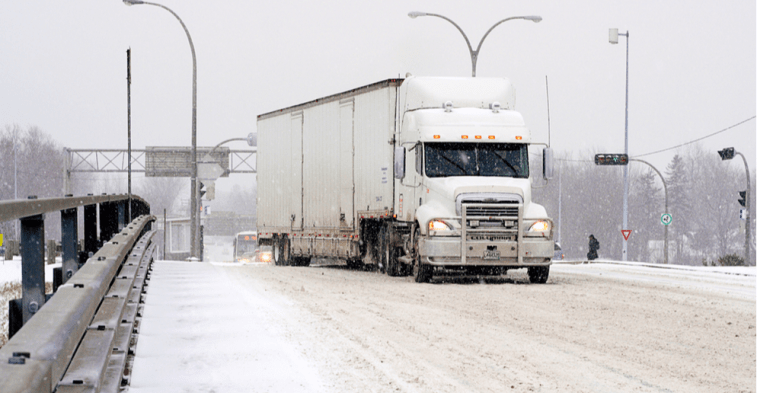Fortifying the Supply Chain Against Seasonal Challenges: 7 Scenarios
As the seasons change, so do the risks businesses face. That’s true of any industry, but these seasonal challenges can be even more impactful in a sector as complex and interconnected as the supply chain.
Resilience is key to success in an increasingly competitive industry. Supply chains must anticipate and prepare for shifting seasonal obstacles to become as resilient as possible. With that in mind, here are seven common seasonal scenarios supply chains should plan for.
1. Demand Shifts
One of the most consistent seasonal challenges supply chains face is shifting demand. For many logistics companies, like UPS, peak season lies between November and January, while others are busier in the summer. Regardless of when it occurs, supply chains face uneven demand throughout the year, which can be disruptive.
Failure to adapt to these shifts quickly or accurately can result in shortages, delays or surpluses. The solution to this challenge is to promote more transparency throughout the supply chain and its partners. Logistics companies must communicate quickly and thoroughly with their clients and vice versa to reveal demand shifts as they occur.
Data analytics can help predict future seasonal demand shifts based on historical trends. Supply chains can utilize Internet of Things (IoT) sensors to gather this data and predictive analytics algorithms to analyze it and stay on top of these changes.
2. Extreme Temperatures
Another seasonal challenge supply chains must account for is extreme temperatures in the winter and summer. Heat and cold add urgency to operations by endangering sensitive shipments and raising maintenance concerns.
Since most trailers aren’t temperature-controlled, extreme cold and heat could damage products if they take too long to ship. Logistics companies can mitigate this risk by prioritizing time-sensitive shipments like these and employing climate-controlled trailers. IoT trackers can help monitor product health to inform any needed route changes, which is especially helpful in food supply chains.
Supply chain organizations must also ensure all vehicles meet high maintenance standards as temperatures shift. Extreme heat and cold take a toll on trucks, so businesses may have to schedule upkeep more often to prevent breakdowns.
3. High Rainfall and Flooding
Supply chains may have to deal with high rainfall in some areas during spring and summer. This can make road transportation risky, limiting drivers’ visibility and reducing trucks’ grip on the road. It can also lead to flooding in extreme cases, further delaying shipments and damaging goods.
Logistics companies must ensure they train drivers on how to be safe in the rain. Telematics systems can help monitor speed and behavior to enforce driving policies. Supply chain managers can also incorporate weather analytics into their route planning to help drivers avoid heavy rain if possible.
Supply chains with locations near coasts, lakes or rivers should assess their flooding risk. Facilities in high-risk areas should install early warning systems and flood barriers.
4. Winter Storms
Winter storms bring snow and ice, and these conditions can also threaten supply chains. Ice will expand inside cracks in the road, creating potholes and making roads slippery, and snow may limit air travel.
Like with many weather conditions, winter storm preparedness starts with monitoring. Supply chains that see a storm approaching should develop a contingency plan if one route becomes inaccessible. Companies may need to ship items from a different warehouse as roads and airports shut down.
Communication is also essential. Every point along the logistics network should communicate with others about developing road conditions and incoming storms. That allows supply chains to respond faster to inclement weather.
5. Increased Traffic
Some seasonal challenges have more to do with behavior trends than weather threats. Increasing traffic in the warmer months can be an obstacle since 71.6% of all freight in the U.S. travels by truck. Ground shipments will likely take longer to reach their destination, and vehicles may face more hazards from other drivers.
Most traffic peaks occur in warmer months, with August consistently featuring the most miles traveled and July falling close behind. Supply chain organizations should prepare for increased transit in these months and give themselves more time for road shipments than usual. Adjusting shipment methods to prefer shorter routes can also help.
A significant portion of addressing traffic delays is managing clients’ expectations. Logistics providers may not be able to deliver on quick shipment times, so they shouldn’t promise them during peak months.
6. Fluctuating Workforces
The supply chain industry faces a fluctuating workforce throughout the year. Some months may be more challenging to find workers than others, making expansion or adjusting to meet seasonal demands more difficult.
The number of young people looking for work increases dramatically between April and July as schools and colleges let out. These may be the best times of year for supply chains to hire new workers, but they may struggle to acquire them in the fall by comparison. Understanding the context behind these shifts can inform more effective hiring decisions.
Seasonal availability may increase in the summer, but if supply chains want permanent workers, they should favor new college graduates. Hiring in the summer will give companies a broader pool of applicants to choose from, making it easier to expand.
7. Shifting Maintenance Needs
Equipment maintenance needs will also shift between seasons. Proactive maintenance is essential any time of year, but different components will wear at varying speeds depending on the weather. Understanding these uneven repair needs can help companies plan more effective maintenance schedules.
For example, dirt, insects and other contaminants may accumulate in truck engines faster during the summer. Consequently, logistics companies may have to schedule oil and filter changes more frequently in the warmer months. Similarly, since vehicle batteries consume twice as much power to start in the cold, battery checks may have to be more frequent in the winter.
Supply chain organizations should review these repair needs to create maintenance schedules that vary between seasons. Using IoT devices to enable predictive maintenance, which alerts workers to repair concerns in real-time, may be even more effective. That way, companies can address issues as they become a concern but before they become a bigger problem.
Create a Supply Chain for all Seasons
Changing weather and shifting human behavior can challenge supply chains if they don’t prepare for it. However, if logistics companies understand how their obstacles change throughout the year, they can become as resilient as possible.
These seven scenarios are not the only seasonal challenges supply chains may face, but they are common threats. Businesses that prepare to mitigate these obstacles ahead of time can maintain peak efficiency regardless of the season.





Leave a Reply